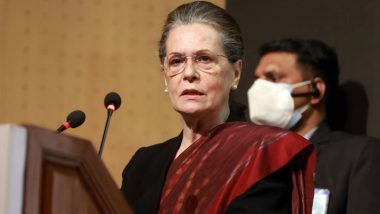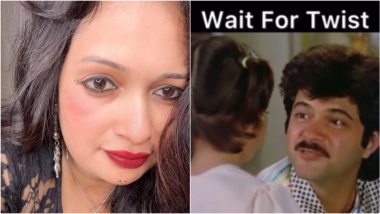On August 8, 1942, when the world was in the midst of one of the biggest wars of all time (World War II), Mahatma Gandhi had a message for his Indian brethren - 'Do or Die'. This message was the wake-up call for one of the biggest freedom struggles, The Quit India movement that began from the next day, that happened in our country against its then British rulers. Quit India Movement was an important chapter in Indian history as five years after it began, the country gained independence in 1947. Quit India Day 2019: Facts About Mahatma Gandhi’s Quit India Movement As India Celebrates 77th Year.
Strangely, though, while our freedom struggle has been a part of many movies, mostly biopics, the Quit India movement has not been covered as much as it should. Especially in Bollywood. We have had biopics of freedom fighters (all those Bhagat Singh movies, and biopics on Subhash Chandra Bose, Mahatma Gandhi et al). We have had movies made movies about India's First War of Independence aka the National Uprising of 1857 (Manikarnika, Mangal Pandey).
We have covered the conquests of Subhash Chandra Bose's Indian National Army (INA) during the World War II that was happening parallel to Quit India movement in movies like Bose: The Forgotten Hero or Rangoon. Why, the tragic consequences of partition that happened after the movement have been a subject of many a movie, most recently being Salman Khan's Bharat and Alia Bhatt's Kalank.
But count the number of Bollywood movies that documents the Quit India movement from 1942 to 1946 on your fingers, and you will find that you still have enough of your digits to spare.
Interestingly one of the very few movies that referred to the movement was made during that period itself. It was the Ashok Kumar starrer Kismet that came out in 1943. The movie was hailed by many film historians for being way ahead of its team in having Bollywood's first anti-hero, while also discussing then-taboo subjects like unmarried pregnancy. What's more, Kismet was also bold enough to include a song that actually asks to British referred to as baharwalon to get out of India, because Hindustan Hamara Hai!
The song, while saving itself from British Censors, became so popular. Yes, it referred to German and Japanese forces, who were considered as the enemies of England during the World War, but the rest of the lyrics was a sly protest against the British occupancy in the country. Reports of those days say that the lyricist Kavi Pradeep, who wrote the song had to go underground when the British realised their folly os passing the song.
Another important movie that covered the Quit India movement was Shaheed, that came out in 1948, a year after we got our freedom. The movie starred Dilip Kumar and had him play a young freedom fighter in the '40s caught between his obligation to the country and his own personal problems.
The most popular movie in Bollywood that gets into the movement is Vidhu Vinod Chopra's 1942: A Love Story. Starring Anil Kapoor, Manisha Koirala and Jackie Shroff, the movie is a love story set against the backdrop of Quit India movement, though the setting is entirely fictional.
Interestingly, none of the movies mentioned about showed a full depiction of Mahatma Gandhi's path of non-violence. Apart from these movies, Quit India movement has been a major part in the 1982 film Gandhi, but then it is a British film rather than an Indian flick. Which makes us really wonder, why Bollywood film-makers who are often obsessed with patriotic films, never explored stories around our final struggle to gain independence.
(The above story first appeared on LatestLY on Aug 09, 2019 07:27 PM IST. For more news and updates on politics, world, sports, entertainment and lifestyle, log on to our website latestly.com).













 Quickly
Quickly




















